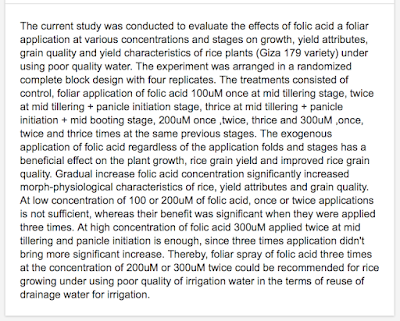My first exposure to Dr. Elaine Ingham in 2015 was an epic event for me. For several years I had listened to Dr. Ann Kennedy of WSU about soil microbes and how they benefit plants, but never had I ever heard that plants communicate! Unbelievable was my first reaction. Fascination soon followed. The more I learn about this subject the more I see an analogy of soil microbial life to human life . The life humans experience today is dependent on our social interactions, manufacturing, communication and transportation capabilities. It's the same with plants, both in-species and between species. My following statements are gross over simplifications, but the concept is correct. Each plant competes for space, nutrients, and water. Some plants communicate danger to the in-species community. An example, would be an insect biting into a leaf of a specific plant. That plant reacts instantly to this attack, sending out a pheromone that wafts through the air. Other "like" plants receive this signal and instantly start producing a chemical protectant to discourage predation either through odor or taste. Another example would be a plant needing a nutrient. If the plant supports mycorrhiza fungal networks, and most do, the plant sends notice through the network that it needs a particular atom. The mycorrhiza network will provide and exchange that atom for a carbon atom from the plant. This was absolutely mind blowing to me a few years back.
Comparing human experience to plant experience: IMAGINE, ----> how well You would thrive, if your house, along with the roads that connected you to your community and businesses were regularly destroyed. I think you would be quickly reduced to survival mode, with little ability to produce. We most likely would rely on a lot more government handouts. DESTRUCTION is what we have done, and continue doing to our soil, regularly with cultivation, by applying crop protecting chemistry, and applying fertilizer. Depending on how aggressively we till, or apply our poisons, determines the extent of the destruction we do to our plant's supporting microbial community, communication, and transportation systems year after year.
MORE DETAIL ON DESTRUCTION: First of all, there is a natural fire that consumes soil organic matter through normal microbial activity, resulting in a slow leakage of carbon (CO2) into the atmosphere. Tillage is a fire accelerator, (mixing oxygen, fuel and moisture together). Every tillage operation over the field stokes that fire by accelerating microbial activity. WSU did an extensive study of this in the 1970's starting with the prime tillage operation (plow, disc, chisel), than the cultivator, weeder and finally a harrowing operation. The amount of carbon emitted into the atmosphere depended of the aggressiveness of the tillage, moisture in the tilled zone, and the temperature in the tilled zone. The result of tilling is similar to our burning fossil fuels (coal, gasoline, diesel, natural gas). HERBICIDE applications add salts, many are chelators that tie-up specific nutrient atoms, and all react negatively with soil biology. INSECTICIDES AND FUNGICIDES , obvious by the names, while effective on their target species, negatively effect beneficial soil biology. There are few pathogens compared to the number of beneficial species. Industrial agriculture has done a good job of marketing their products, and farmers have been complicit in the development of them through their eagerness to purchase. At the end of WWII, around 1945, Industry needed new markets for products originally developed for the war. It was found that some products could be used for fertilizing plants and others would kill unwanted vegetation, insects, etc. Industry's marketing strategy quickly convinced farmers that products in a "jug" was easier to use than the old methods of using plant cultivars for fertility, weed and bug control. This has resulted in the deteriorated state of our soil. After 75 years, this destruction of natural soil productivity is being recognized and a new concept of "REGENERATIVE AGRICULTURE" is being developed to recover this lost soil capability. That journey if for another post.


